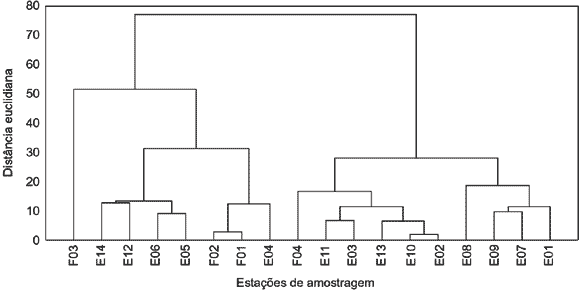The Tijuca Lagoon is located south of Rio de Janeiro City. It is bordered by a discontinued and narrow belt of mangrove trees. Mangrove forests have a high structural variability. Of the eighteen stands studied there are monospecifics stands of Laguncularia racemosa with dbh between 3.4 and 7.7 cm and height between 4.5 and 7.7 m, dominated by trees with dbh less than 10.0 cm. At the other stands, occur mixed forests, structuraly more developed, sometimes dominated by Laguncularia racemosa, sometimes by Rhizophora mangle (dbh between 7.8 and 16.7 cm; height between 6.8 and 16.1 m, prevailing trees with dbh greater than 10.0 cm). There are also mixed stands dominated by Avicenia schaueriana (dbh of 7.1 cm and 5.3 m high, predominating individuals over 10.0 cm in dbh). The structural variability observed, is strong evidence of an altered landscape. Observations on mangrove forests at southeastern Brazil show that stands dominated by Laguncularia racemosa with low dbh are typical of degraded sites in process of restoration. The structure that is quite close to that of the original forest is represented by the most developed stands (high dbh and height). One of the studied stands, with mature forest of Rhizophora mangle, high developed for the structural patterns of mangrove at the southeastern Brazil is jeopardized by the invasion of Acrostichum sp., wich is preventing the development of R.mangle saplings. This invasion is related to a high deposition of mud, wich rose the substrate, reducing tide inundation.
mangrove; structure; conservation; Brazil








